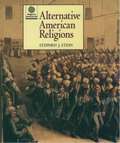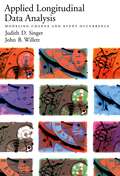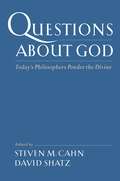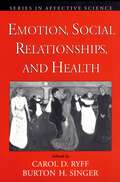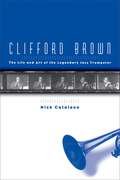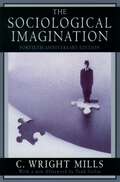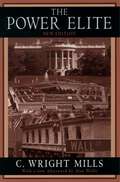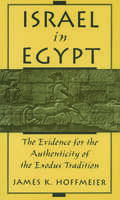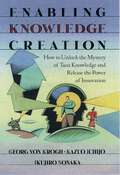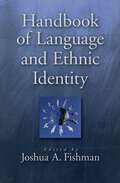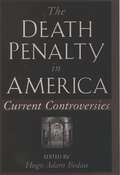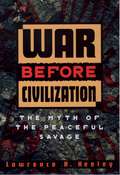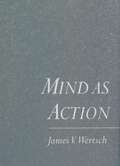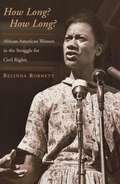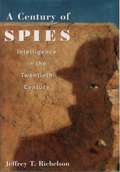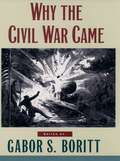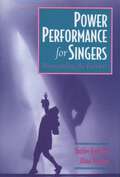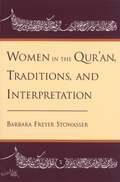- Table View
- List View
Communities of Dissent: A History of Alternative Religions in America
by Stephen J. SteinAlternative religious groups have had a profound influence on American history-they have challenged the old and opened up new ways of thinking about healing, modes of meaning, religious texts and liturgies, the social and political order, and the relationships between religion and race, class, gender, and region. Virtually always, the dramatic, dynamic history of alternative religions runs parallel to that of dissent in America. Communities of Dissent is an evenhanded and marvelously lively history of New Religious Movements in America. Stephen J. Stein describes the evolution and structure of alternative religious movements from both sides: the critics and the religious dissenters themselves. Providing a fascinating look at a wide range of New Religious Movements, he investigates obscure groups such as the 19th-century Vermont Pilgrims, who wore bearskins and refused to bathe or cut their hair, alongside better-known alternative believers, including colonial America's largest outsider faith, the Quakers; 17th- and 18th-century Mennonites, Amish, and Shakers; and the Christian Scientists, Jehovah's Witnesses, Black Muslims, and Scientologists of today. Accessible and comprehensive, Communities of Dissent also covers the milestones in the history of alternative American religions, from the infamous Salem witch trials and mass suicide/murder at Jonestown to the positive ways in which alternative religions have affected racial relations, the empowerment of women, and American culture in general.
Hidden Gospels: How the Search for Jesus Lost Its Way
by Philip JenkinsThis incisive critique thoroughly and convincingly debunks the claims that recently discovered texts such as the Gospel of Thomas, the Gospel of Mary, and even the Dead Sea Scrolls undermine the historical validity of the New Testament. Jenkins places the recent controversies surrounding the hidden gospels in a broad historical context and argues that, far from being revolutionary, such attempts to find an alternative Christianity date back at least to the Enlightenment. By employing the appropriate scholarly and historical methodologies, he demonstrates that the texts purported to represent pristine Christianity were in fact composed long after the canonical gospels found in the Bible. Produced by obscure heretical movements, these texts have attracted much media attention chiefly because they seem to support radical, feminist, and post-modern positions in the modern church. Indeed, Jenkins shows how best-selling books on the "hidden gospels" have been taken up by an uncritical, drama-hungry media as the basis for a social movement that could have powerful effects on the faith and practice of contemporary Christianity.
Applied Longitudinal Data Analysis: Modeling Change and Event Occurrence
by Judith D. Singer John B. WillettChange is constant in everyday life. Infants crawl and then walk, children learn to read and write, teenagers mature in myriad ways, the elderly become frail and forgetful. Beyond these natural processes and events, external forces and interventions instigate and disrupt change: test scores may rise after a coaching course, drug abusers may remain abstinent after residential treatment. By charting changes over time and investigating whether and when events occur, researchers reveal the temporal rhythms of our lives. Applied Longitudinal Data Analysis is a much-needed professional book for empirical researchers and graduate students in the behavioral, social, and biomedical sciences. It offers the first accessible in-depth presentation of two of today's most popular statistical methods: multilevel models for individual change and hazard/survival models for event occurrence (in both discrete- and continuous-time). Using clear, concise prose and real data sets from published studies, the authors take you step by step through complete analyses, from simple exploratory displays that reveal underlying patterns through sophisticated specifications of complex statistical models. Applied Longitudinal Data Analysis offers readers a private consultation session with internationally recognized experts and represents a unique contribution to the literature on quantitative empirical methods. Visit http://www.ats.ucla.edu/stat/examples/alda.htm for: · Downloadable data sets · Library of computer programs in SAS, SPSS, Stata, HLM, MLwiN, and more · Additional material for data analysis
Questions About God: Today's Philosophers Ponder the Divine
From young children, with their guileless, searching questions, to the recently bereaved, trying to make sense of tragic loss, humans wrestle with our relationship to God--and with God's essence, motivations, and power--throughout our lives: Why does God permit catastrophe and senseless tragedy, again and again? Is God's power limited in any way? Can He change the past? Does He know the future? Why does God require prayer? Why does He not provide stronger evidence of His presence? Whom does God consign to hell, and why? Does God change? Suffer? What can we make of the conflicting diversity within world religions, of the many gods of different religious traditions? Such questions engage, confront, and perplex us on a daily basis. In this rich, concise volume, leading philosophers who have long pondered God's nature and ways take on these core problems and present their findings in a manner likely to engage believer and non-believer, general reader and specialist alike.
Creating Better Futures: Scenario Planning as a Tool for a Better Tomorrow
by James A. OgilvyAs a founder and managing director of Global Business Network, James Ogilvy helped develop the technique of scenario planning, which has become an integral part of strategic thinking in both business and government. Now Ogilvy shows how we can use this cutting-edge method for social change in our own neighborhoods. In Creating Better Futures, Ogilvy presents a profound new vision of how the world is changing--and how it can be changed for the better. Ogilvy argues that self-defined communities, rather than individuals or governments, have become the primary agents for social change. Towns, professional associations, and interest groups of all kinds help shape the future in all the ways that matter most, from schools and hospitals to urban development. The key to improvement is scenario planning--a process that draws on groups of people, both lay and expert, to draft narratives that spell out possible futures, some to avoid, some inspiring hope. Scenario planning has revolutionized both public and private planning, leading to everything from the diverse product lines that have revived the auto industry, to a timely decision by the state of Colorado to avoid pouring millions into an oil-shale industry that never materialized. But never before has anyone proposed that it be taken up by society as a whole. Drawing on years of experience in both academia and the private sector, where he developed both a keen sense of how businesses work best and an abiding passion for changing the world, James Ogilvy provides the tools we need to create better communities: better health, better education, better lives.
Handbook for Mortals: Guidance for People Facing Serious Illness
by Joanne Lynn Joan Harrold The Center to Improve Care of the DyingHandbook for Mortals is warmly addressed to all those who wish to approach the final years of life with greater awareness of what to expect and greater confidence about how to make the end of our lives a time for growth, comfort, and meaningful reflection. Written by Drs. Joanne Lynn and Joan Harrold and a variety of experts from nursing, hospice, counseling, and the arts, this book provides equal measures of practical information and gentle insight. Readers will learn what decisions they will need to face, where to look for help, how to ease pain and other symptoms, what to expect with specific diseases, and how the health-care system operates. Equally important to this practical information are the personal stories included here of how people have come to terms with dying, faced their fears, and made important choices. From down-to-earth advice on how to talk to your doctor to inspiring quotes from such writers as W. H. Auden, Jane Kenyon, and others, Handbook for Mortals encompasses the needs of both the body and the spirit in our final years.
Emotion, Social Relationships, and Health (Series in Affective Science)
This volume brings together, for the first time, inquiries into the size and proximity of social networks and emotion in social relationships to advance understanding of how emotion in significant social relationships influences health. The collection integrates knowledge from those with expertise in mapping the nature of emotional experience in human relations with those who are linking social ties to health outcomes, and those who explicate underlying neurobiological mechanisms. The book puts forth the idea that full explication of how emotion, social relationships, and health are woven together demands multidisciplinary inquiry and brings together leading experts from fields of affective science, clinical and social psychology, epidemiology, psychiatry, psychoneuroimmunology, psychoneuroendocrinology, and health to promote the above synthesis.
Clifford Brown: The Life and Art of the Legendary Jazz Trumpeter
by Nick CatalanoAlthough he died in a tragic car accident at twenty-five, Clifford Brown is widely considered one of the most important figures in the history of jazz, a trumpet player who ranks with Louis Armstrong, Dizzy Gillespie, and Miles Davis, and a leading influence on contemporary jazz musicians. Now, in Clifford Brown: The Life and Art of the Legendary Jazz Trumpeter, Nick Catalano gives us the first major biography of this musical giant. Based on extensive interviews with Clifford Brown's family, friends, and fellow jazz musicians, here is a fascinating portrait of a remarkable musician. Catalano depicts Brown's early life, showing how he developed a facility and dazzling technique that few jazz players have ever equaled. We read of his meteoric rise in Philadelphia, where he played with many of the leading jazz players of the 1950s, including Dizzy Gillespie and Charlie Parker; his tour of Europe with Lionel Hampton, which made him famous; and his formation of the Brown-Roach Quintet with prominent drummer Max Roach--one of the most popular hard bop combos of the day. Catalano also shows that Brown was a remarkable individual--he grew up in a middle-class African-American home in Wilmington, Delaware, attended college, was a skilled mathematician, and had wide cultural interests. Moreover, in an era when most jazz players were either alcoholics or addicts, Brown was clean-living and drug free. Indeed, he became a role model for musicians who were struggling with drugs and had great influence in this area with one prominent colleague, tenor sax player Sonny Rollins. Clifford Brown not only provides a colorful account of Brown's life, but also features an informed analysis of his major recorded solos, highlighting Brown's originality and revealing why he remains a great influence on trumpet players today. It is a book that anyone with a serious interest in jazz will want to own.
George Washington's Mount Vernon: At Home in Revolutionary America
by Robert F. Dalzell Lee Baldwin DalzellGeorge Washington's Mount Vernon brings together--for the first time--the details of Washington's 45-year endeavor to build and perfect Mount Vernon. In doing so it introduces us to a Washington few of his contemporaries knew, and one little noticed by historians since. Here we meet the planter/patriot who also genuinely loved building, a man passionately human in his desire to impress on his physical surroundings the stamp of his character and personal beliefs. As chief architect and planner of the countless changes made at Mount Vernon over the years, Washington began by imitating accepted models of fashionable taste, but as time passed he increasingly followed his own ideas. Hence, architecturally, as the authors show, Mount Vernon blends the orthodox and the innovative in surprising ways, just as the new American nation would. Equally interesting is the light the book sheds on the process of building at Mount Vernon, and on the people--slave and free--who did the work. Washington was a demanding master, and in their determination to preserve their own independence his workers often clashed with him. Yet, as the Dalzells argue, that experience played a vital role in shaping his hopes for the future of American society--hope that embraced in full measure the promise of the revolution in which he had led his fellow citizens. George Washington's Mount Vernon thus compellingly combines the two sides of Washington's life--the public and the private--and uses the combination to enrich our understanding of both. Gracefully written, with more than 80 photographs, maps, and engravings, the book tells a fascinating story with memorable insight.
The Sociological Imagination
by C. Wright MillsC. Wright Mills is best remembered for his highly acclaimed work The Sociological Imagination, in which he set forth his views on how social science should be pursued. Hailed upon publication as a cogent and hard-hitting critique, The Sociological Imagination took issue with the ascendant schools of sociology in the United States, calling for a humanist sociology connecting the social, personal, and historical dimensions of our lives. The sociological imagination Mills calls for is a sociological vision, a way of looking at the world that can see links between the apparently private problems of the individual and important social issues.
The Power Elite
by C. Wright MillsFirst published in 1956, The Power Elite stands as a contemporary classic of social science and social criticism. C. Wright Mills examines and critiques the organization of power in the United States, calling attention to three firmly interlocked prongs of power: the military, corporate, and political elite. The Power Elite can be read as a good account of what was taking place in America at the time it was written, but its underlying question of whether America is as democratic in practice as it is in theory continues to matter very much today. What The Power Elite informed readers of in 1956 was how much the organization of power in America had changed during their lifetimes, and Alan Wolfe's astute afterword to this new edition brings us up to date, illustrating how much more has changed since then. Wolfe sorts out what is helpful in Mills' book and which of his predictions have not come to bear, laying out the radical changes in American capitalism, from intense global competition and the collapse of communism to rapid technological transformations and ever changing consumer tastes. The Power Elite has stimulated generations of readers to think about the kind of society they have and the kind of society they might want, and deserves to be read by every new generation.
Israel in Egypt: The Evidence for the Authenticity of the Exodus Tradition
by James K. HoffmeierScholars of the Hebrew Bible have in the last decade begun to question the historical accuracy of the Israelite sojourn in Egypt, as described in the book of Exodus. The reason for the rejection of the exodus tradition is said to be the lack of historical and archaeological evidence in Egypt. Those advancing these claims, however, are not specialists in the study of Egyptian history, culture, and archaeology. In this pioneering book, James Hoffmeier examines the most current Egyptological evidence and argues that it supports the biblical record concerning Israel in Egypt.
Enabling Knowledge Creation: How to Unlock the Mystery of Tacit Knowledge and Release the Power of Innovation
by Georg von Krogh Kazuo Ichijo Ikujiro NonakaWhen The Knowledge-Creating Company (OUP; nearly 40,000 copies sold) appeared, it was hailed as a landmark work in the field of knowledge management. Now, Enabling Knowledge Creation ventures even further into this all-important territory, showing how firms can generate and nurture ideas by using the concepts introduced in the first book. Weaving together lessons from such international leaders as Siemens, Unilever, Skandia, and Sony, along with their own first-hand consulting experiences, the authors introduce knowledge enabling--the overall set of organizational activities that promote knowledge creation--and demonstrate its power to transform an organization's knowledge into value-creating actions. They describe the five key "knowledge enablers" and outline what it takes to instill a knowledge vision, manage conversations, mobilize knowledge activists, create the right context for knowledge creation, and globalize local knowledge. The authors stress that knowledge creation must be more than the exclusive purview of one individual--or designated "knowledge" officer. Indeed, it demands new roles and responsibilities for everyone in the organization--from the elite in the executive suite to the frontline workers on the shop floor. Whether an activist, a caring expert, or a corporate epistemologist who focuses on the theory of knowledge itself, everyone in an organization has a vital role to play in making "care" an integral part of the everyday experience; in supporting, nurturing, and encouraging microcommunities of innovation and fun; and in creating a shared space where knowledge is created, exchanged, and used for sustained, competitive advantage. This much-anticipated sequel puts practical tools into the hands of managers and executives who are struggling to unleash the power of knowledge in their organization.
Handbook of Language & Ethnic Identity
This volume presents a comprehensive introduction to the connection between language and ethnicity. Since the "ethnic revival" of the last twenty years, there has been a substantial and interdisciplinary change in our understanding of the connection between these fundamental aspects of our identity. Joshua Fishman has commissioned over 25 previously unpublished papers on every facet of the subject. This volume is interdisciplinary and the contributors are all distinguished figures in their fields. After each chapter Fishman pulls together the various views that have been expressed and shows how they differ and how they are alike. The volume is useful as a scholarly reference, a resource for the lay reader, and can also be used as a text in ethnicity courses.
The Death Penalty in America
by Hugo Adam BedauInThe Death Penalty in America: Current Controversies, Hugo Adam Bedau, one of our preeminent scholars on the subject,provides a comprehensive sourcebook on the death penalty, making the process of informed consideration not only possible but fascinating as well. No mere revision of the third edition of The Death Penalty in America--which the New York Times praised as "the most complete, well-edited and comprehensive collection of readings on the pros and cons of the death penalty"--this volume brings together an entirely new selection of 40 essays and includes updated statistical and research data, recent Supreme Court decisions, and the best current contributions to the debate over capital punishment. From the status of the death penalty worldwide to current attitudes of Americans toward convicted killers, from legal arguments challenging the constitutionality of the death penalty to moral arguments enlisting the New Testament in support of it, from controversies over the role of race and class in the judicial system to proposals to televise executions, Bedau gathers readings that explore all the most compelling aspects of this most compelling issue.
War Before Civilization
by Lawrence H. KeeleyThe myth of the peace-loving "noble savage" is persistent and pernicious. Indeed, for the last fifty years, most popular and scholarly works have agreed that prehistoric warfare was rare, harmless, unimportant, and, like smallpox, a disease of civilized societies alone. Prehistoric warfare, according to this view, was little more than a ritualized game, where casualties were limited and the effects of aggression relatively mild. Lawrence Keeley's groundbreaking War Before Civilization offers a devastating rebuttal to such comfortable myths and debunks the notion that warfare was introduced to primitive societies through contact with civilization (an idea he denounces as "the pacification of the past"). Building on much fascinating archeological and historical research and offering an astute comparison of warfare in civilized and prehistoric societies, from modern European states to the Plains Indians of North America, War Before Civilization convincingly demonstrates that prehistoric warfare was in fact more deadly, more frequent, and more ruthless than modern war. To support this point, Keeley provides a wide-ranging look at warfare and brutality in the prehistoric world. He reveals, for instance, that prehistorical tactics favoring raids and ambushes, as opposed to formal battles, often yielded a high death-rate; that adult males falling into the hands of their enemies were almost universally killed; and that surprise raids seldom spared even women and children. Keeley cites evidence of ancient massacres in many areas of the world, including the discovery in South Dakota of a prehistoric mass grave containing the remains of over 500 scalped and mutilated men, women, and children (a slaughter that took place a century and a half before the arrival of Columbus). In addition, Keeley surveys the prevalence of looting, destruction, and trophy-taking in all kinds of warfare and again finds little moral distinction between ancient warriors and civilized armies. Finally, and perhaps most controversially, he examines the evidence of cannibalism among some preliterate peoples. Keeley is a seasoned writer and his book is packed with vivid, eye-opening details (for instance, that the homicide rate of prehistoric Illinois villagers may have exceeded that of the modern United States by some 70 times). But he also goes beyond grisly facts to address the larger moral and philosophical issues raised by his work. What are the causes of war? Are human beings inherently violent? How can we ensure peace in our own time? Challenging some of our most dearly held beliefs, Keeley's conclusions are bound to stir controversy.
Mind As Action
by James V. WertschContemporary social problems typically involve many complex, interrelated dimensions--psychological, cultural, and institutional, among others. But today, the social sciences have fragmented into isolated disciplines lacking a common language, and analyses of social problems have polarized into approaches that focus on an individual's mental functioning over social settings, or vice versa. In Mind as Action, James V. Wertsch argues that current approaches to social issues have been blinded by the narrow confines of increasing specialization in the social sciences. In response to this conceptual blindness, he proposes a method of sociocultural analysis that connects the various perspectives of the social sciences in an integrated, nonreductive fashion. Wertsch maintains that we can use mediated action, which he defines as the irreducible tension between active agents and cultural tools, as a productive method of explicating the complicated relationships between human action and its manifold cultural, institutional, and historical contexts. Drawing on the ideas of Lev Vygotsky, Mikhail Bakhtin, and Kenneth Burke, as well as research from various fields, this book traces the implications of mediated action for a sociocultural analysis of the mind, as well as for some of today's most pressing social issues. Wertsch's investigation of forms of mediated action such as stereotypes and historical narratives provide valuable new insights into issues such as the mastery, appropriation, and resistance of culture. By providing an analytic unit that has the possibility of operating at the crossroads of various disciplines, Mind as Action will be important reading for academics, students, and researchers in psychology, linguistics, cognitive science, sociology, literary analysis, and philosophy.
How Long? How Long?: African American Women in the Struggle for Civil Rights
by Belinda RobnettA compelling and readable narrative history, How Long? How Long? presents both a rethinking of social movement theory and a controversial thesis: that chroniclers have egregiously neglected the most important leaders of the Civil Rights movement, African-American women, in favor of higher-profile African-American men and white women. Author Belinda Robnett argues that the diversity of experiences of the African-American women organizers has been underemphasized in favor of monolithic treatments of their femaleness and blackness. Drawing heavily on interviews with actual participants in the American Civil Rights movement, this work retells the movement as seen through the eyes and spoken through the voices of African-American women participants. It is the first book to provide an analysis of race, class, gender, and culture as substructures that shaped the organization and outcome of the movement. Robnett examines the differences among women participants in the movement and offers the first cohesive analysis of the gendered relations and interactions among its black activists, thus demonstrating that femaleness and blackness cannot be viewed as sufficient signifiers for movement experience and individual identity. Finally, this book makes a significant contribution to social movement theory by providing a crucial understanding of the continuity and complexity of social movements, clarifying the need for different layers of leadership that come to satisfy different movement needs. An engaging narrative history as well as a major contribution to social movement and feminist theory, How Long? How Long? will appeal to students and scholars of social activism, women's studies, American history, and African-American studies, and to general readers interested in the perennially fascinating story of the American Civil Rights movement.
A Century of Spies: Intelligence in the Twentieth Century
by Jeffery T. RichelsonHere is the ultimate inside history of twentieth-century intelligence gathering and covert activity. Unrivalled in its scope and as readable as any spy novel, A Century of Spies travels from tsarist Russia and the earliest days of the British Secret Service to the crises and uncertainties of today's post-Cold War world, offering an unsurpassed overview of the role of modern intelligence in every part of the globe. From spies and secret agents to the latest high-tech wizardry in signals and imagery surveillance, it provides fascinating, in-depth coverage of important operations of United States, British, Russian, Israeli, Chinese, German, and French intelligence services, and much more. All the key elements of modern intelligence activity are here. An expert whose books have received high marks from the intelligence and military communities, Jeffrey Richelson covers the crucial role of spy technology from the days of Marconi and the Wright Brothers to today's dazzling array of Space Age satellites, aircraft, and ground stations. He provides vivid portraits of spymasters, spies, and defectors--including Sidney Reilly, Herbert Yardley, Kim Philby, James Angleton, Markus Wolf, Reinhard Gehlen, Vitaly Yurchenko, Jonathan Pollard, and many others. Richelson paints a colorful portrait of World War I's spies and sabateurs, and illuminates the secret maneuvering that helped determine the outcome of the war on land, at sea, and on the diplomatic front; he investigates the enormous importance of intelligence operations in both the European and Pacific theaters in World War II, from the work of Allied and Nazi agents to the "black magic" of U.S. and British code breakers; and he gives us a complete overview of intelligence during the length of the Cold War, from superpower espionage and spy scandals to covert action and secret wars. A final chapter probes the still-evolving role of intelligence work in the new world of disorder and ethnic conflict, from the high-tech wonders of the Gulf War to the surprising involvement of the French government in industrial espionage. Comprehensive, authoritative, and addictively readable, A Century of Spies is filled with new information on a variety of subjects--from the activities of the American Black Chamber in the 1920s to intelligence collection during the Cuban missile crisis to Soviet intelligence and covert action operations. It is an essential volume for anyone interested in military history, espionage and adventure, and world affairs.
Why the Civil War Came (Gettysburg Civil War Institute Books)
by Gabor S. BorittIn the early morning of April 12, 1861, Captain George S. James ordered the bombardment of Fort Sumter, beginning a war that would last four horrific years and claim a staggering number of lives. Since that fateful day, the debate over the causes of the American Civil War has never ceased. What events were instrumental in bringing it about? How did individuals and institutions function? What did Northerners and Southerners believe in the decades of strife preceding the war? What steps did they take to avoid war? Indeed, was the great armed conflict avoidable at all? Why the Civil War Came brings a talented chorus of voices together to recapture the feel of a very different time and place, helping the reader to grasp more fully the commencement of our bloodiest war. From William W. Freehling's discussion of the peculiarities of North American slavery to Charles Royster's disturbing piece on the combatants' savage readiness to fight, the contributors bring to life the climate of a country on the brink of disaster. Mark Summers, for instance, depicts the tragically jubilant first weeks of Northern recruitment, when Americans on both sides were as yet unaware of the hellish slaughter that awaited them. Glenna Matthews underscores the important war-catalyzing role played by extraordinary public women, who proved that neither side of the Mason-Dixon line was as patriarchal as is thought. David Blight reveals an African-American world that "knew what time it was," and welcomed war. And Gabor Boritt examines the struggle's central figure, Lincoln himself, illuminating in the years leading up to the war a blindness on the future president's part, an unwillingness to confront the looming calamity that was about to smash the nation asunder. William E. Gienapp notes perhaps the most unsettling fact about the Civil War, that democratic institutions could not resolve the slavery issue without resorting to violence on an epic scale. With gripping detail, Why the Civil War Came takes readers back to a country fraught with bitterness, confusion, and hatred--a country ripe for a war of unprecedented bloodshed--to show why democracy failed, and violence reigned.
Islam, Gender, and Social Change
by Yvonne Yazbeck Haddad John L. EspositoFor several decades, the Muslim world has experienced a religious resurgence. The reassertion of Islam in personal and political life has taken many forms, from greater attention to religious practice to the emergence of Islamic organizations, movements, and institutions. One of the most controversial and emotionally charged aspects of this revival has been its effect on women in Muslim societies. The essays collected in this book place this issue in its historical context and offer case studies of Muslim societies from North Africa to Southeast Asia. These fascinating studies shed light on the impact of the Islamic resurgence on gender issues in Iran, Egypt, Jordan, Pakistan, Oman, Bahrain, the Philippines, and Kuwait. Taken together, the essays reveal the wide variety that exists among Muslim societies and believers, and the complexity of the issues under consideration. They show that new things are happening for women across the Islamic world, and are in many cases being initiated by women themselves. The volume as a whole militates against the stereotype of Muslim women as repressed, passive, and without initiative, while acknowledging the very real obstacles to women's initiatives in most of these societies.
Power Performance for Singers: Transcending the Barriers
by Shirlee Emmons Alma ThomasTo perform well in today's highly competitive world where technical skills have been advanced to an unprecedented degree, a singer must be able to handle incredible pressure within the performing arena; his or her ability to deal with this stress will often determine whether he or she will succeed. Why, then, do singers with less technical skill sometimes out-perform stars? Why do some stars suddenly stop performing? What is that mysterious factor that makes an electric performance? Consistent, competent performances do not depend solely upon superior vocal skills, nor are they a matter of luck. On the contrary, the best performances result from a combination of mental attitude, concrete performing skills, and excellent technical skills in that order. Yet most singers have never had the opportunity to acquire the essential skills that make for a successful career. Written as a self-help manual for singers at all levels of expertise, Power Performance for Singers is designed to teach performing artists, and especially singers, how to experience elite performance at their level. The skills outlined in this book will help singers use what they have, to enjoy their voices during performance, and to perform consistently to the best of their present ability.
A Passion for Wisdom: A Very Brief History of Philosophy
by Robert C. Solomon Kathleen M. HigginsWhen the ancient Greek philosopher, Pythagoras, was asked if he was a wise man, he humbly replied "No, I am only a lover of wisdom." This love of wisdom has been central to the philosophical enterprise for thousands of years, inspiring some of the most dazzling and daring achievements of the human intellect and providing the very basis for how we understand the world. Now, readers eager to acquire a basic familiarity with the history of philosophy but intimidated by the task will find in A Passion for Wisdom: Philosophy Through the Ages, a lively, accessible, and highly enjoyable tour of the world's great ideas. Without simplifying their subject, editors Robert Solomon and Kathleen Higgins tell the story of philosophy's development with great clarity and refreshing wit. The brevity of their study, in fact, allows readers to see more clearly the connections and divergences between philosophers, as well as the way ideas change, reappear, and evolve over time. The authors begin with the most ancient religious beliefs and bring us right up to the feminist and multicultural philosophies of the present. Along the way, major philosophers are highlighted, from Plato and Aquinas to William James and Simone deBeauvoir, and major categories explored, from metaphysics and ethics to politics and logic. We also see the evolution of enduring ideas--how, for example, the value of subjective experience is treated in Augustine, Luther, Descartes, and Kirkegaard, how the idea of dynamic change appears in the work of Heraclitus, Darwin, Hegel, and Nietzsche, and how the recurring dichotomies between faith and reason, belief and skepticism, mysticism and empiricism occupy philosophers from one generation to the next. The authors make clear the many ways philosophers have argued with, borrowed from, and built on each other's ideas throughout the ages. We see Francis Bacon rejecting Aristotelian dogma, the impact of Buddhism on Schopenhauer, and the influence of Hume and Rousseau on the monumental philosophy of Imanuel Kant. The book is enlivened as well by telling anecdotes and sparkling quotations. We're treated to Thomas Hobbes' assessment--"Life is nasty, brutish, and short," Hegel's description of Napoleon as "world history on horseback," Schopenhauer's assertion that Art allows us a "Sabbath from the penal servitude of willing," and many other memorable and provocative observations. Accessible, comprehensive, and delightfully written, A Passion for Wisdom is a splendid introduction to an intellectual tradition that reaches back over three thousand years. More than that, it is a much-needed reminder for the present of the power inherent in humanity's wonder before the world.
Women in the Qur'an, Traditions, and Interpretation
by Barbara Freyer StowasserIslamic ideas about women and their role in society spark considerable debate both in the Western world and in the Islamic world itself. Despite the popular attention surrounding Middle Eastern attitudes toward women, there has been little systematic study of the statements regarding women in the Qur'an. Stowasser fills the void with this study on the women of Islamic sacred history. By telling their stories in Qur'an and interpretation, she introduces Islamic doctrine and its past and present socio-economic and political applications. Stowasser establishes the link between the female figure as cultural symbol, and Islamic self-perceptions from the beginning to the present time.
